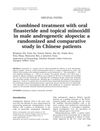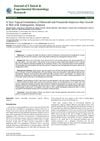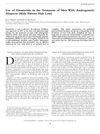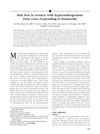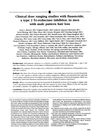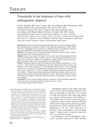Popliteal Artery Entrapment Syndrome (PAES) — A Case Report on Differential Diagnosis of Intermittent Claudication
December 2007
in “
Röntgenpraxis
”
claudication intermittens Thoracic-outlet Syndrome Raynaud's disease tibio-brachial index color-coded duplex sonography MR angiography CT angiography angiography popliteal artery Popliteal Artery Entrapment Syndrome gastrocnemius muscle thrombosis segmental occlusion arteriosclerosis popliteal aneurysm cystic adventitial degeneration vascular reconstruction claudication TOS Raynaud's TBI duplex ultrasound MRI angiography CT scan angiogram PAES calf muscle blood clot artery blockage hardening of the arteries cystic degeneration vascular surgery
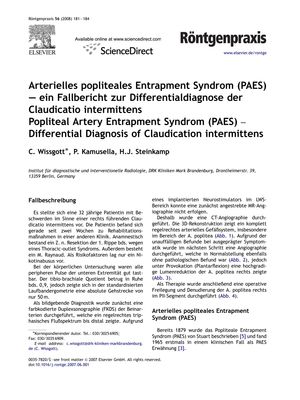
TLDR Popliteal Artery Entrapment Syndrome (PAES) is a rare but possible cause of leg pain during walking, even in untrained women.
The document presents a case report of a 32-year-old female patient with symptoms of claudication intermittens predominantly in the right leg. The patient had a history of first rib resection due to Thoracic-outlet Syndrome and Raynaud's disease, with smoking as the only risk factor. Despite normal peripheral pulses and a tibio-brachial index of 0.9 at rest, the patient could only walk 50 meters on a treadmill. Initial color-coded duplex sonography showed a normal triphasic flow spectrum, but due to an implanted neurostimulator, MR angiography could not be performed. A CT angiography revealed a normal arterial system, but subsequent angiography under provocation (plantar flexion) showed a high-grade luminal reduction of the right popliteal artery. The patient underwent surgical exposure and denudation of the right popliteal artery in the PII segment. Popliteal Artery Entrapment Syndrome (PAES) is a rare cause of claudication intermittens, with an incidence of 0.165% in young Greek military men and 3.5% in a post-mortem study, predominantly affecting young, well-trained men. The patient's case is unusual as it involves an untrained woman. PAES is typically caused by an anatomical variant compressing the popliteal artery, often due to the medial head of the gastrocnemius muscle or an accessory band. Symptoms vary and may include atypical claudication, paresthesias, rest pain, or trophic changes. Chronic arterial trauma can lead to vascular lesions, with 65% of patients having thrombosis or segmental occlusion at diagnosis. Imaging starts with color-coded duplex sonography, but MR angiography has replaced selective angiography as the method of choice. CT angiography plays a minor role in PAES diagnosis. Differential diagnoses include arteriosclerosis, popliteal aneurysm, or cystic adventitial degeneration. Early diagnosis may only require cutting the compressing structure, but later stages may need vascular reconstruction. Surgery for functional PAES should only be performed if claudication intermittens is confirmed, and it is noted that temporary compression of the popliteal artery occurs in about 50% of the population during extreme plantar or dorsiflexion.

